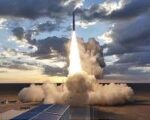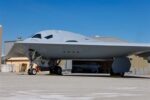The Spanish Navy has officially named its second domestically built S-80 Plus submarine, the S-82 ‘Narciso Monturiol’, during a ceremony at Navantia’s Cartagena shipyard. This event marks another key milestone in Spain’s effort to establish an indigenous air-independent propulsion (AIP) submarine capability and reduce reliance on foreign platforms.
Strategic Significance of the S-80 Plus Program
The S-80 Plus program represents Spain’s most ambitious naval engineering project to date and is central to its strategic goal of achieving autonomy in undersea warfare capabilities. Developed by state-owned shipbuilder Navantia for the Armada Española (Spanish Navy), the class is designed to replace aging Agosta-class submarines and bolster Spain’s ability to conduct long-endurance patrols in contested waters.
Unlike conventional diesel-electric submarines that must surface or snorkel frequently to recharge batteries, the AIP-equipped S-80 Plus boats can remain submerged for extended periods—reportedly up to three weeks—enhancing their stealth and operational endurance. This capability is critical for intelligence-gathering missions and force projection in NATO operations or national defense scenarios.
Technical Overview of the Narciso Monturiol (S-82)
The S-82 ‘Narciso Monturiol’ is the second unit in a planned four-submarine series. The design features several enhancements over earlier concepts due to significant redesigns during development. Key specifications include:
- Length: Approximately 81 meters
- Displacement: Around 3,000 tonnes submerged
- Propulsion: Diesel-electric with Bio-Ethanol Stealth Technology-based AIP system
- Dive Depth: Estimated >300 meters
- Crew: ~32 personnel + special forces accommodations
- Weapons Suite: Six 533 mm torpedo tubes capable of launching heavyweight torpedoes (DM2A4 or similar), anti-surface missiles (e.g., UGM-84 Harpoon), and naval mines
- Sensors: Integrated sonar suite from Thales/Navantia; flank arrays; optronic mast; electronic warfare suite
- C4ISR: Combat Management System jointly developed by Navantia Sistemas and Lockheed Martin
The AIP module—a key differentiator—is expected to be installed after sea trials but before final delivery. This phased integration approach was also used on lead boat Isaac Peral (S-81).
Naming Ceremony Highlights Naval Heritage and Innovation
The naming ceremony took place on October 10, 2025, at Navantia’s Cartagena facility with high-level attendance including Spanish Defense Minister Margarita Robles and Chief of Naval Staff Admiral Antonio Piñeiro Sánchez. The event also paid tribute to Narcís Monturiol i Estarriol (1819–1885), a Catalan engineer who pioneered early submarine designs with his Ictíneo prototypes—making him a symbolic figure for Spain’s modern undersea ambitions.
This symbolic naming underscores continuity between historical innovation and current technological sovereignty efforts. It also reflects Spain’s broader defense-industrial policy aimed at strengthening domestic R&D ecosystems while maintaining interoperability with NATO allies.
S-80 Program Timeline: Delays Turned Lessons Learned
The road to this milestone has not been smooth. Originally launched as the “S-80” program in early 2000s with first delivery planned around 2013–2015, it suffered significant delays due to weight imbalance issues discovered during construction of lead boat Isaac Peral (S-81). In response, Navantia collaborated with General Dynamics Electric Boat to redesign hull geometry—lengthening it by approximately seven meters—and rebranded it as “S-80 Plus.”
S-81 was finally launched in April 2021 and began sea trials in mid–2023; delivery is now expected by late Q4/2025 following successful integration of its AIP system. The experience gained from these setbacks has reportedly improved quality control processes across subsequent units like S-82.
AIP System: Strategic Enabler Still Under Evaluation
The Bio-Ethanol Stealth Technology-based AIP system developed by Abengoa Innovación remains one of the most closely watched components of this program. Unlike Stirling engines or fuel cell systems used by other navies (e.g., Sweden’s Gotland-class or Germany’s Type 212A), Spain opted for an ethanol reformer feeding a hydrogen fuel cell stack—a novel approach that promises low acoustic signature and high endurance but remains unproven at full operational scale.
Ashore testing at Cartagena has been ongoing since mid–2023. Integration into operational units will proceed incrementally after validation milestones are cleared during sea trials aboard Isaac Peral.
Industrial Implications and Export Potential
The successful rollout of multiple boats from this class would significantly enhance Navantia’s credibility as a builder of advanced conventional submarines—a market currently dominated by German TKMS (Type 212/214), French Naval Group (Scorpène), South Korea’s DSME/KSS-II/III series, and Sweden’s Saab Kockums.
- Domestic impact: Over two dozen Spanish firms are involved in subsystem production—from propulsion modules to combat systems—supporting thousands of skilled jobs across regions like Murcia and Andalusia.
- Export prospects: While no confirmed foreign orders exist yet, Navantia has promoted the platform at events such as Euronaval and IMDEX Asia as a NATO-interoperable alternative tailored for medium-sized navies seeking sovereign maintenance options without nuclear propulsion constraints.
NATO Integration and Strategic Outlook
Sitting at a crossroads between Atlantic maritime corridors and Mediterranean chokepoints like Gibraltar, Spain views its undersea fleet as vital not only for national security but also for alliance contributions under NATO maritime task forces such as SNMGs or Operation Sea Guardian.
If all four boats are delivered by late this decade—with projected IOC for each roughly two years apart—the Armada Española will regain continuous patrol capacity lost after retiring older Agosta-class units without immediate replacement. Moreover, lessons learned from this program could inform future upgrades or even next-generation autonomous underwater vehicle programs led by Spanish industry players.
What Comes Next?
S–83 ‘Cosme García’ is already under construction with keel laid in late–2023; launch may occur by late–2026 if current timelines hold. Final unit—S–84 ‘Mateo García de los Reyes’—is expected around early–2030s barring further delays.
The coming months will be critical as both Isaac Peral completes sea trials with integrated AIP system while Narciso Monturiol begins pre-launch outfitting ahead of formal commissioning expected around late–2027 or early–2028.
If successful across all four hulls, Spain will join an elite group capable of designing, building, integrating—and potentially exporting—advanced non-nuclear submarines tailored for extended blue-water operations within allied frameworks.









